Jaguar I-Pace vs Porsche Cayenne – Performance, range & efficiency compared
Two cars, one duel: Jaguar I-Pace meets Porsche Cayenne.
Which one wins in performance, efficiency and value for money? Find out now!
Costs and Efficiency:
Looking at overall running costs, both models reveal some interesting differences in everyday economy.
Jaguar I-Pace has a barely noticeable advantage in terms of price – it starts at 79200 £, while the Porsche Cayenne costs 87000 £. That’s a price difference of around 7800 £.
As for range, the Jaguar I-Pace performs convincingly better – achieving up to 469 km, about 386 km more than the Porsche Cayenne.
Engine and Performance:
Power, torque and acceleration are the classic benchmarks for car enthusiasts – and here, some clear differences start to show.
When it comes to engine power, the Porsche Cayenne has a convincingly edge – offering 739 HP compared to 400 HP. That’s roughly 339 HP more horsepower.
In acceleration from 0 to 100 km/h, the Porsche Cayenne is noticeable quicker – completing the sprint in 3.60 s, while the Jaguar I-Pace takes 4.80 s. That’s about 1.20 s faster.
In terms of top speed, the Porsche Cayenne performs noticeable better – reaching 305 km/h, while the Jaguar I-Pace tops out at 200 km/h. The difference is around 105 km/h.
There’s also a difference in torque: Porsche Cayenne pulls evident stronger with 950 Nm compared to 696 Nm. That’s about 254 Nm difference.
Space and Everyday Use:
Cabin size, boot volume and payload all play a role in everyday practicality. Here, comfort and flexibility make the difference.
Both vehicles offer seating for 5 people.
In curb weight, Porsche Cayenne is hardly perceptible lighter – 2130 kg compared to 2226 kg. The difference is around 96 kg.
In terms of boot space, the Porsche Cayenne offers a bit more room – 772 L compared to 638 L. That’s a difference of about 134 L.
In maximum load capacity, the Porsche Cayenne performs a bit better – up to 1708 L, which is about 255 L more than the Jaguar I-Pace.
When it comes to payload, Porsche Cayenne clearly perceptible takes the win – 705 kg compared to 444 kg. That’s a difference of about 261 kg.
Who comes out on top?
Overall, the Porsche Cayenne shows itself to be outperforms in nearly all aspects and secures the title of DriveDuel Champion.
It convinces with the more balanced overall package and proves to be the more versatile choice for everyday use.
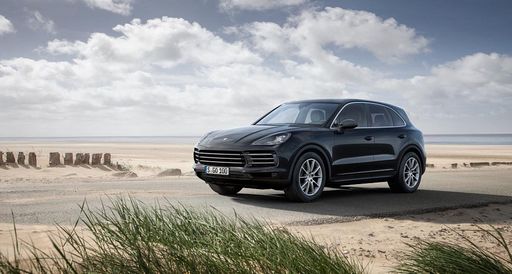
Porsche Cayenne
Jaguar I-Pace
The Jaguar I-Pace represents a remarkable fusion of cutting-edge electric performance and iconic British luxury. With its sleek design and spacious interior, this model redefines what one can expect from an electric vehicle in terms of style and comfort. Its impressive driving dynamics and advanced technology make it a standout choice for those looking to make a statement on the road.
details @ media.jaguar.com
@ media.jaguar.com
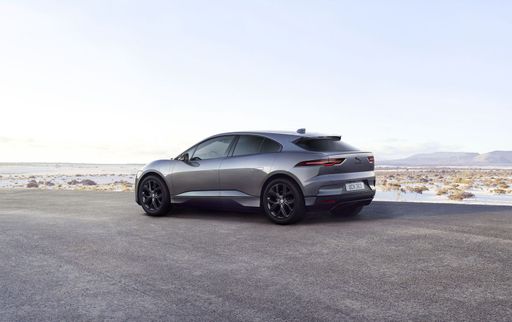 @ media.jaguar.com
@ media.jaguar.com
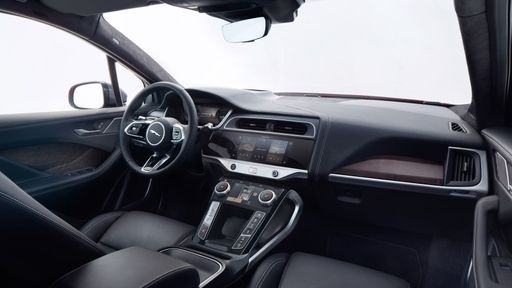 @ media.jaguar.com
@ media.jaguar.com
Porsche Cayenne
Der Porsche Cayenne präsentiert sich als beeindruckender Vertreter der Premium-SUVs und verbindet kraftvolles Design mit luxuriösem Komfort. Sein dynamisches Fahrverhalten und die hochwertigen Materialien im Innenraum machen jede Fahrt zu einem besonderen Erlebnis. Zudem bietet der Cayenne modernste Technologiefunktionen, die sowohl Unterhaltung als auch Sicherheit gewährleisten.
details @ Porsche Media Deutschland
@ Porsche Media Deutschland
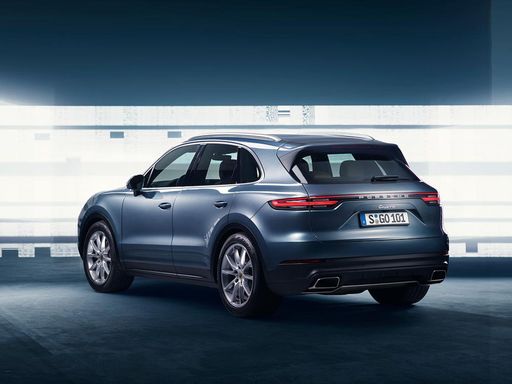 @ Porsche Media Deutschland
@ Porsche Media Deutschland
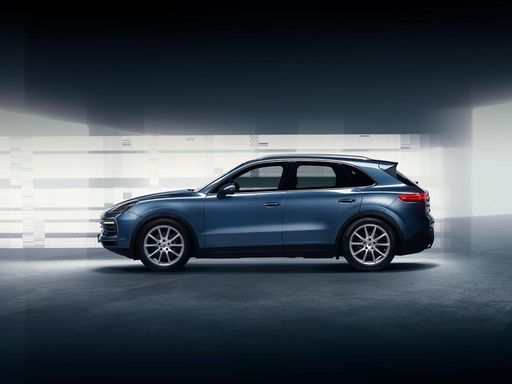 @ Porsche Media Deutschland
@ Porsche Media Deutschland
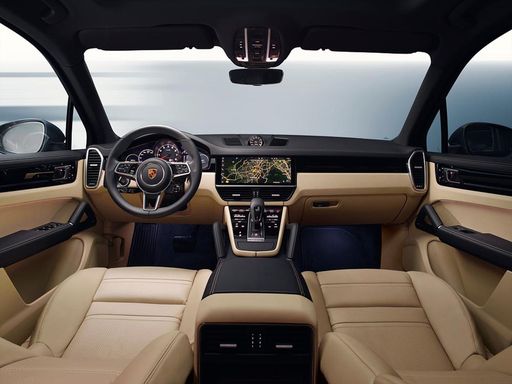 @ Porsche Media Deutschland
@ Porsche Media Deutschland
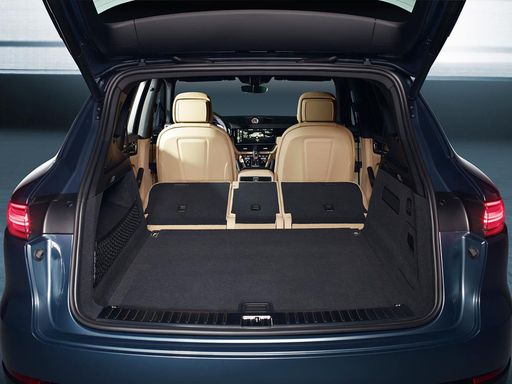 @ Porsche Media Deutschland
@ Porsche Media Deutschland

|

|
|
|
|
Costs and Consumption |
|
|---|---|
|
Price
79200 - 85500 £
|
Price
87000 - 186400 £
|
|
Consumption L/100km
-
|
Consumption L/100km
4 - 12.2 L
|
|
Consumption kWh/100km
25.20 kWh
|
Consumption kWh/100km
-
|
|
Electric Range
469 km
|
Electric Range
74 - 83 km
|
|
Battery Capacity
84.70 kWh
|
Battery Capacity
21.80 kWh
|
|
co2
0 g/km
|
co2
90 - 277 g/km
|
|
Fuel tank capacity
-
|
Fuel tank capacity
70 - 90 L
|
Dimensions and Body |
|
|---|---|
|
Body Type
SUV
|
Body Type
SUV
|
|
Seats
5
|
Seats
4 - 5
|
|
Doors
5
|
Doors
5
|
|
Curb weight
2226 kg
|
Curb weight
2130 - 2670 kg
|
|
Trunk capacity
638 L
|
Trunk capacity
434 - 772 L
|
|
Length
4682 mm
|
Length
4930 mm
|
|
Width
2011 mm
|
Width
1983 - 1989 mm
|
|
Height
1566 mm
|
Height
1652 - 1698 mm
|
|
Max trunk capacity
1453 L
|
Max trunk capacity
1344 - 1708 L
|
|
Payload
444 kg
|
Payload
365 - 705 kg
|
Engine and Performance |
|
|---|---|
|
Engine Type
Electric
|
Engine Type
Petrol, Plugin Hybrid
|
|
Transmission
Automatic
|
Transmission
Automatic
|
|
Transmission Detail
Reduction Gearbox
|
Transmission Detail
Automatic Gearbox
|
|
Drive Type
All-Wheel Drive
|
Drive Type
All-Wheel Drive
|
|
Power HP
400 HP
|
Power HP
353 - 739 HP
|
|
Acceleration 0-100km/h
4.80 s
|
Acceleration 0-100km/h
3.6 - 6 s
|
|
Max Speed
200 km/h
|
Max Speed
248 - 305 km/h
|
|
Torque
696 Nm
|
Torque
500 - 950 Nm
|
|
Number of Cylinders
-
|
Number of Cylinders
6 - 8
|
|
Power kW
294 kW
|
Power kW
260 - 544 kW
|
|
Engine capacity
-
|
Engine capacity
2995 - 3996 cm3
|
General |
|
|---|---|
|
Model Year
2023
|
Model Year
2025
|
|
CO2 Efficiency Class
A
|
CO2 Efficiency Class
G, B, C
|
|
Brand
Jaguar
|
Brand
Porsche
|
What drivetrain options does the Jaguar I-Pace have?
Available configurations include All-Wheel Drive.
The prices and data displayed are estimates based on German list prices and may vary by country. This information is not legally binding.
